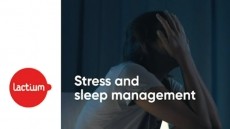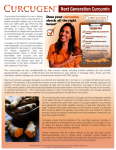More research needed on herbals for tummy ache
gastrointestinal complaints in children, but more research into
their effects is needed, according to a new review article. Some,
such as star anise, could prove dangerous.
"What we did was look at the original research, the studies, what people were out there doing," said Kathi Kemper, pediatrics professor at Wake Forest University Baptist Medical Center and co-author of the article in the August issue of Contemporary Pediatrics.
For benign abdominal pain, often associated with stress, Kemper and her co-author Paula Gardiner cited two studies purporting to show the benefits of chamomile, one involving children under the age of six with acute uncomplicated diarrhea (Arzneimittel Forschung 1997;47 (11): 1247) and the other in infants with colic (unreferenced).
In both instances it seemed to help, but the mixtures used contained both chamomile and pectin, and it is unclear which component was responsible for the effects.
What is more, no randomized, controlled studies have been published on the stress-reducing effects of drinking chamomile tea.
Lemon balm has been found to be helpful for dyspepsia, nausea and nervous stomach, and is particularly popular in Germany, where it is recommended for nervous sleep disorders and functional gastrointestinal complaints.
A herbal product available in Germany called Iberogast, which contains lemon balm and nine other herbal extracts has been found by a meta-analysis of four double-blind, randomized trials to be of benefit to adults with functional dyspepsia (Advances in Therapy 2003; 1:43).
Of the preparations for colic, only peppermint and fennel seed oil come with credible scientific studies that seem to support their safety and efficacy for children.
Despite having a long history of use and being given to colicky infants in the Caribbean and Latin America, the authors warned against administration of Chinese star anise due to reports of adulteration with closely related Japanese star anise, which contains potent neurotoxins.
Nor is its Chinese cousin entirely toxin free: it contains compounds called veranisatins, which have been shown to have a neurological impact at higher doses.
As for gripe water, no clinical studies have been carried out, and formulations were banned in the US in 1982. The FDA defines it as an unapproved drug.
As well as colic, peppermint is used for flatulence, diarrhea, ingestion, nausea, vomiting, irritable bowel syndrome (IBS) and dyspepsia. Studies have suggested that enteric-coated peppermint capsules are effective for both children and adults with IBS, and for chronic, recurrent abdominal pain in children.
One small study has been published comparing ginger root to dimenhyrdinate in children aged between four and eight years who were prone to motion sickness (European Phytotherapy 1999;6(2):102). All of the children taking ginger experienced relief of symptoms with no reported side effects, compared to just a third of those taking dimenhydrinate. Those taking dimenhydrinate also reported side effects.
The article also cites evidence that probiotics can benefit children with viral gastroenteritis and mild diarrhea (Pediatrics 2005; 115(1):174).
While Cascara sagrada and senna have both been approved by the FDA for constipation in adults and children over two years, Kemper and Gardiner advise that they should be used as laxatives only sparingly, in the short term, and in cases that cannot be treated with fiber.
The ground husk of the psyllium seed is a soluble fiber used combat constipation in adults, but its effectiveness in children has not been evaluated.
The growing trend towards the administration of complementary and alternative medicine (CAM) to children was highlighted by a survey carried out at Brenner Children's Hospital and published in the Pediatric Annals in April.
Forty-five percent of families surveyed reported giving their child an herbal product, and more than half of caregivers were unsure whether the herbal remedies interacted with other medications. Forty-five per cent reported discussing their use with the child's primary health care provider.
At this time, Kemper pointed out: "Children have their own unique physiology and metabolize, excrete and absorb supplements differently from adults. Even if a supplement has proven clinical efficacy and safety, the lack of standardization and regulation of supplements are obstacles in making recommendations."
The message is reinforced in the most recent article, which is intended as a guide for pediatricians who need to arm themselves with the evidence due to caregivers' renewed preference for natural alternatives over prescription medicines.
"Herbs such as chamomile and ginger are safe for children when used in appropriate doses but limited data exists concerning the safety and efficacy of herbal products for children," wrote the authors.













